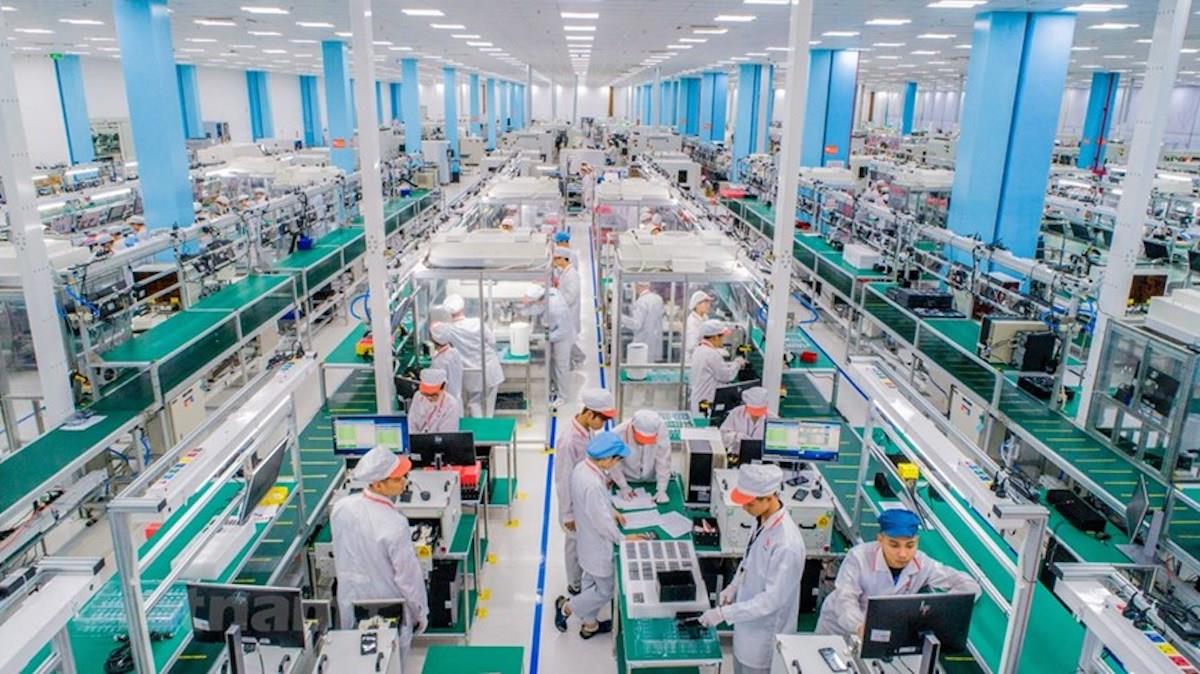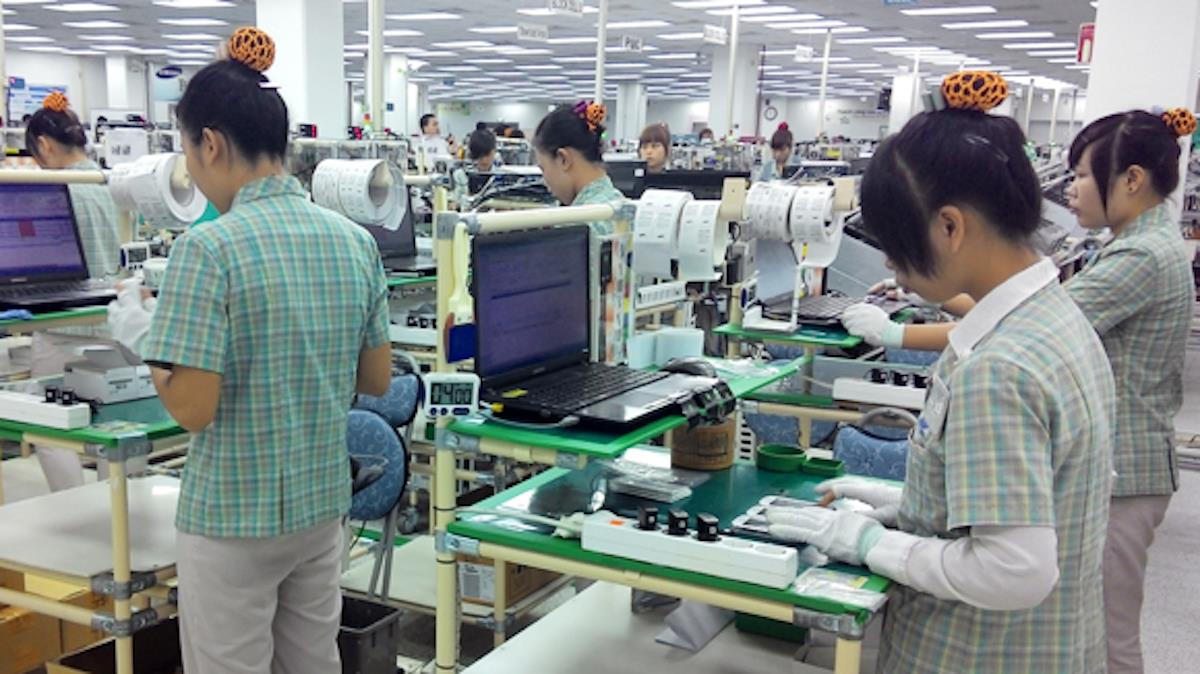(MENAFN- Asia Times) Vietnam currently benefits from China's Covid-19 lockdowns and the geopolitical tensions between the United States and China — especially in Electronics manufacturing. The country flirted with its own“zero-Covid” policy and lockdowns in 2021 but changed course quickly to have two-thirds of its population vaccinated by .
News leaked that Apple would move its iPad production from China to Vietnam in June 2022. China's Xiaomi also moved the production of some of its devices to Vietnam in June 2021 thanks to investments by DBG Technology, a subsidiary of Hong Kong's DBG Electronics Investment Limited.
Samsung, an early entrant into Vietnam, invested in a US$670 million manufacturing plant in the northern province of Bac Ninh in 2014. It increased its investment to $17.3 billion nationwide in a little over a decade. Intel, another early entrant, opened a $1 billion semiconductor assembly and testing facility in Ho Chi Minh City in 2006.
It made additional investments in 2019 and 2020, taking the total to $1.5 billion. Indeed, all this foreign direct investment (FDI) gave rise to a that“the US-China trade war is over and Vietnam is the winner.”
Between 2010 and 2020, exports of electronics, computers and components from Vietnam grew at an average annual rate of 28.6%, with double-digit growth even in the years prior to the US-China trade tensions and Covid-19 lockdowns. That was chiefly the result of domestic reforms in the mid-2000s, namely the 2005 Enterprises Law and the 2000 Investment Law.
These regulations, fully implemented in 2015, allow foreign firms to acquire majority shareholdings in domestic enterprises. That enables Vietnam to participate in the global parts and components trade as foreign firms in these production networks are no longer interested in joint ventures with local companies. They would prefer to become owners to control quality and ensure the timely delivery of goods.
The costs of doing business in Vietnamese cities were significantly lowered in the mid-2000s, making Vietnam regionally competitive. FDI grew rapidly and was super-charged by the so-called“China Plus One” strategy pursued by multinationals, particularly in electronics.

A smartphone factory in Vietnam. Photo: VNA
As an exporter of electronics, Vietnam jumped from 47th in 2001 to 10th in 2020 with an export value equal to % of the global value of electronics exports. The question is whether this rapid growth is sustainable in terms of Vietnam's evolving comparative advantage and if Vietnam can entrench its position as a global manufacturing hub in electronics.
Lower labor costs are an obvious advantage for Hanoi. Hourly in China and Vietnam rose between 2016 and 2020, but they rose more slowly in Vietnam. In 2020, Vietnam's manufacturing labor costs were about half that of China.
Commercial electricity rates were US$0.3 cents less in Ho Chi Minh City than in Shanghai, while the time taken to obtain an electricity connection was one day faster for firms and households.
include improving the efficiency of tax filing and reducing overall tax rates by 2%. The only significant tax for large foreign high-tech corporations is the Corporate Income Tax, which is % lower than in China. These corporations also get up to four years of corporate tax exemptions.
Vietnam's government has been proactive, with apparent success in in electronics manufacturing and enmeshing Vietnam in global production networks. But longer-term issues need to be resolved to entrench the country as a high-tech manufacturing hub.
Much of the electronics manufacturing in Vietnam currently in the supply chain — the assembly of finished products for export by foreign companies.
Upstream activities such as product design and sub-component production take place in other countries. The United States and South Korea often complete product design, while China does sub-component production. Downstream activities such as sales and distribution also take place overseas.
This explains why Vietnam's value-added to manufacturing exports is, on average, only %. To the extent that a significant component of electronics exports is not local, Vietnamese firms cannot take full advantage of free-trade agreements such as the EU-Vietnam free-trade agreement finalized in 2019.
To move up the value chain, Vietnam urgently needs to upskill its labor force. That will potentially provide“footloose” foreign companies with the skilled labor they need to expand production.
It will enable the local production of electronic components so that expertise can be developed within the country to cope with the new designs and devices that“parent” companies bring to market.

Workers at a Samsung factory in Vietnam. Image: Samsung
The expertise gap is currently being filled by and some Viet Kieus returning from overseas. Some small South Korean component manufacturers are moving to Vietnam to supply Samsung. But this short-term measure cannot replace education and training.
The need for upskilling is recognized by the Vietnamese government in its Social and Economic Development Strategy 2021–2030. But the government is missing a sense of urgency, concrete steps and quantified targets.
While Vietnam's average length of schooling is 10.2 years — second only to Singapore within ASEAN — its tertiary school was 28.6% in 2019.
Out of an estimated 6.9 million people of tertiary education age in Vietnam, just under two million are enrolled in tertiary studies. This figure needs to double to 3.8 million for Vietnam to be in the same league as other upper-middle-income countries within 15–20 years.
With Vietnam's favorable demographics forecasted to end by 2040, there is no time to waste in upskilling its population.
Suiwah Leung is Honorary Associate Professor of Economics at the Crawford School of Public Policy, The Australian National University.
This , republished with permission, was first published by , which is based out of the within the at the .